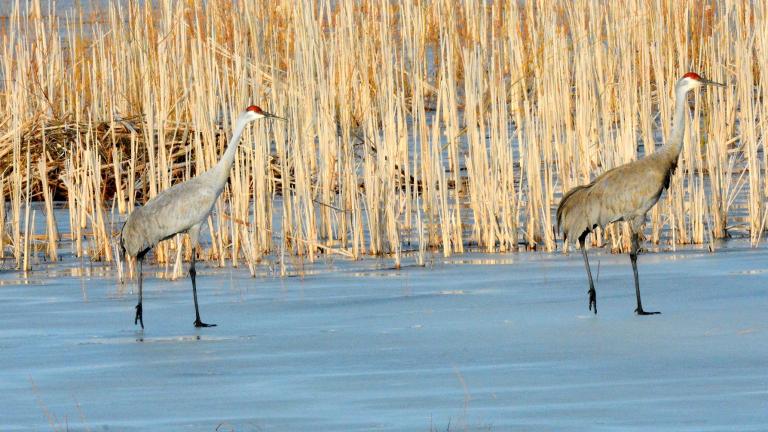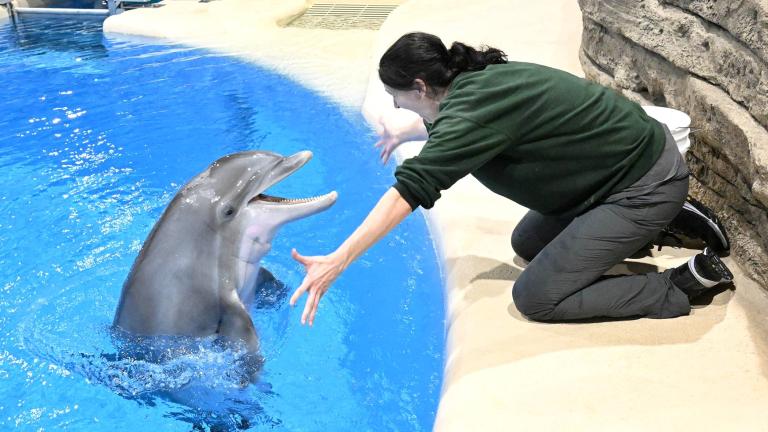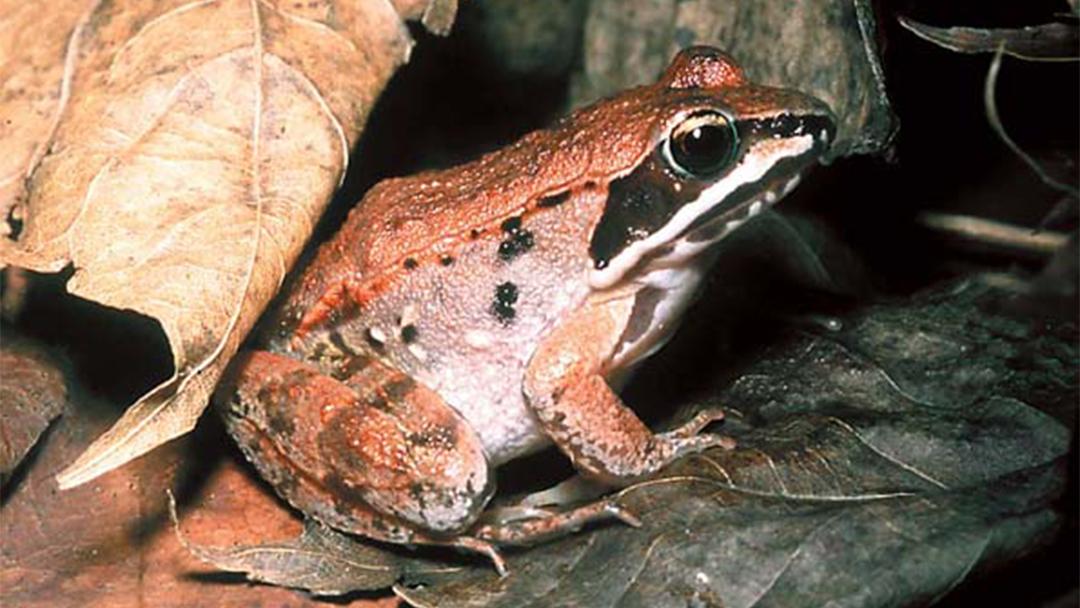 Researchers are studying populations of wood frogs in Lake County. (Wisconsin Department of Natural Resources / Dan Nedrelo)
Researchers are studying populations of wood frogs in Lake County. (Wisconsin Department of Natural Resources / Dan Nedrelo)
Life as an amphibian is no easy hop through the woods.
Because frogs and other amphibians can breathe through their skin, their outer layers are penetrable to gases, liquids and other environmental contaminants. And while amphibians eat insects, they are considered secondary consumers, meaning they are prey for other animals.
But these characteristics, along with the fact that they dwell both in water and on land, make amphibians the perfect subject to study the health of a given ecosystem – such as Lake County Forest Preserves’ MacArthur Woods.
Since late February, researchers from the Peggy Notebaert Nature Museum and Lincoln Park Zoo have been monitoring levels of cortisol (known as the stress hormone) in three species that have been reintroduced or restored by the forest preserve: wood frogs (designated as “in great need of conservation” in Illinois); spotted salamanders, a rare species for northeastern Illinois; and spring peepers, a frog species whose local populations are in decline.
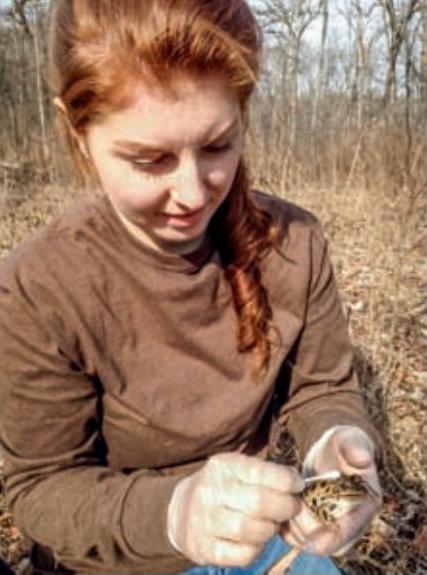 Ashley Hosmer, an intern supporting the research project, swabs a northern leopard frog to collect secreted hormones tested for stress levels. (Courtesy of Allison Sacerdote-Velat)
Led by Allison Sacerdote-Velat, the Nature Museum’s curator of herpetology, scientists are using a noninvasive skin swab to test the amphibians for stress and disease. The swab is conducted by applying a Q-tip to the frog’s skin to collect secreted hormones that are tested for stress levels.
Ashley Hosmer, an intern supporting the research project, swabs a northern leopard frog to collect secreted hormones tested for stress levels. (Courtesy of Allison Sacerdote-Velat)
Led by Allison Sacerdote-Velat, the Nature Museum’s curator of herpetology, scientists are using a noninvasive skin swab to test the amphibians for stress and disease. The swab is conducted by applying a Q-tip to the frog’s skin to collect secreted hormones that are tested for stress levels.
The results will allow researchers to determine each population’s overall health and help the forest preserve adjust its habitat restoration efforts accordingly.
“Frogs are going through a lot of conservation challenges,” Sacerdote-Velat said in a recent radio interview. “The biggest one is habitat loss, but they face a lot of challenges from emerging diseases, like fungal pathogens that are kind of sweeping through the environment. They also have to deal with a lot of pollutants because they use their skin to breathe and to drink, so everything that is toxic can really affect their health and wellbeing.”
For decades, the forest preserve has restored forested flatwoods, wetlands and oak woodlands in an effort to preserve biodiversity, including frog populations. Since 2004, wildlife monitoring efforts led by Sacerdote-Velat have resulted in projects to supplement and reestablish species that are rare to the region or endangered, such as the wood frog.
From 2007-10, the forest preserve relocated wood frog eggs to restored areas of MacArthur Woods where invasive shrubs had been removed. Within four years, biologists had documented successful reproduction and population of wood frogs. A follow-up study in 2016 noted another successful round of reproduction.
The ongoing project, meanwhile, will help researchers monitor the health, stress levels and other community dynamics of the frogs to ensure that populations continue to thrive. Findings from the study will be published in several journals and at professional wildlife conferences, including the Society for the Study of Amphibians and Reptiles.
Results from the cortisone tests and other evaluations are expected by the end of the year.
Follow Alex Ruppenthal on Twitter: @arupp
Related stories:
 Zoo’s Condom Giveaway Brings Awareness to Endangered Species
Zoo’s Condom Giveaway Brings Awareness to Endangered Species
July 5: Lincoln Park Zoo will give away hundreds of condoms this week as part of a nationwide outreach program to draw attention to the link between human population and endangered species.
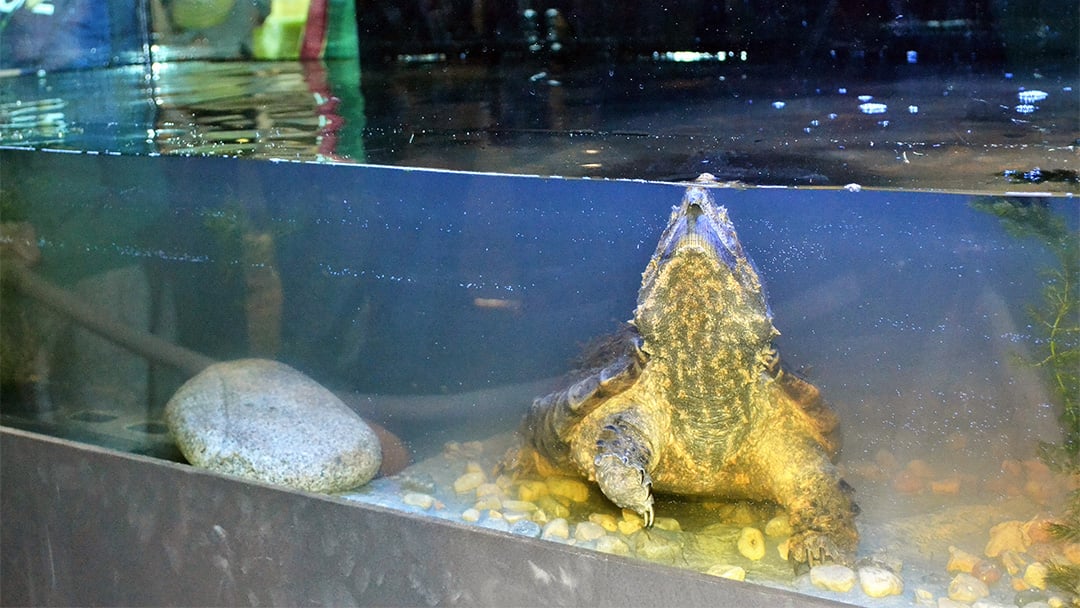 Meet Patsy McNasty, Notebaert Nature Museum’s Alligator Snapping Turtle
Meet Patsy McNasty, Notebaert Nature Museum’s Alligator Snapping Turtle
Jan. 20: Alligator snapping turtle Patsy McNasty moved into a new 300-gallon tank this week at Chicago's Peggy Notebaert Nature Museum, where visitors attended a “housewarming” event for the 14-pound turtle.
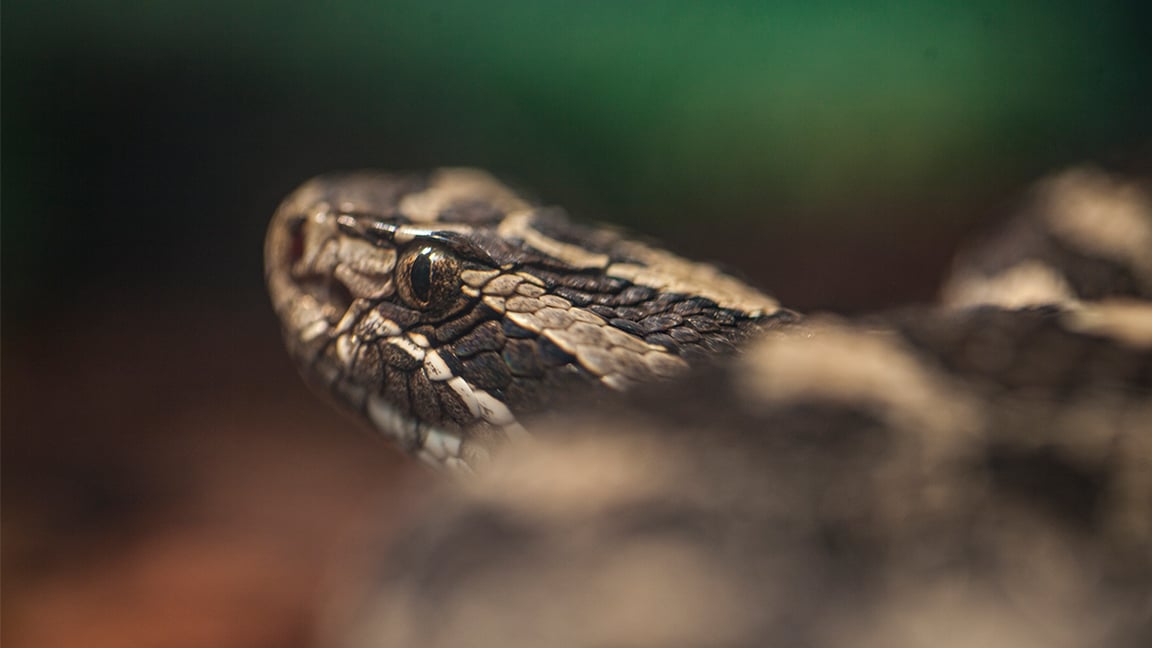 Venomous Illinois Rattlesnake Gets Federal Protection
Venomous Illinois Rattlesnake Gets Federal Protection
Oct. 4: The eastern massasauga rattlesnake, also known as the “swamp rattler,” produces venom more toxic than most other rattlesnakes.



